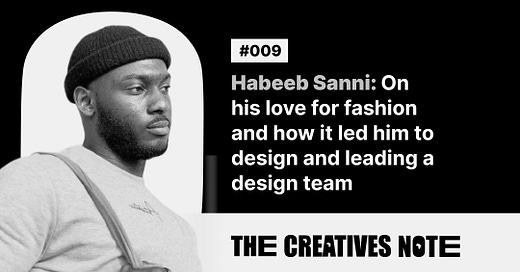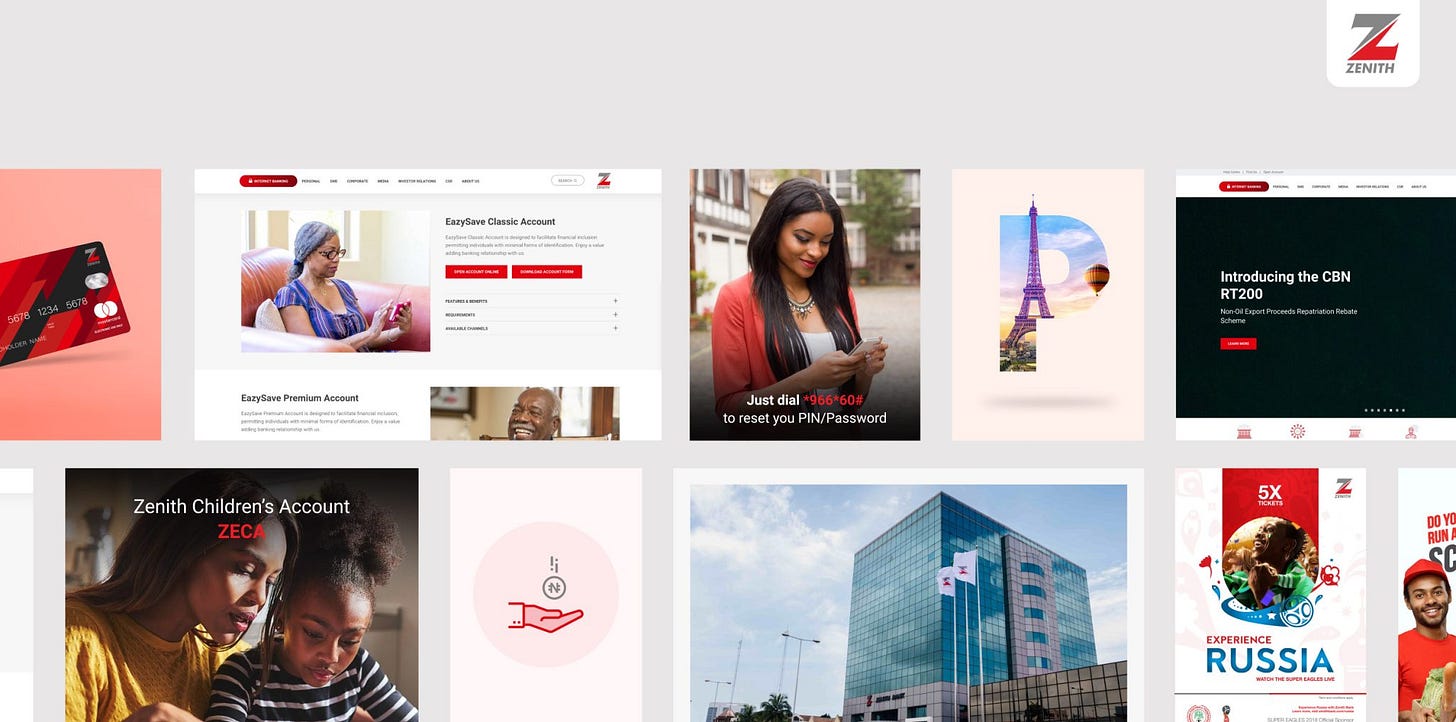Habeeb Sanni: On his love for fashion and how it led him to design and leading a design team — #009
It may interest you that for a start, I had no design background. Growing up, all I noticed was that I loved to see things look neat and appropriate... While researching, I stumbled on Photoshop
Hi, thank you for joining us for another edition of our interview with African Creatives. In this edition, I will be sharing my conversation with Habeeb Sanni, a senior product designer at Toptal who humanizes design with elegant brand and digital expressions. Habeeb happens to also be a fashion and fitness enthusiast. He shares how starting a fashion business led him to design and how he went on to lead the product design team in one of Africa’s leading technology companies providing growth tools for people and businesses.
If you are curious to know what drives the work he does, the major challenges he faced leading a design team and how he navigated them, his favourite projects, the people that inspire him, and the people and brands he would love to work with, you should continue reading. You will definitely love and enjoy reading this!
Tell us about yourself
My name is Habeeb Sanni. I am a product designer with about 7 years of experience. My design journey started professionally in 2015 as a generalist designer. Along my journey, I discovered my passion for brand and product design and I have since had the opportunity to design for innovative startups and forward-thinking companies like Softcom, NIBSS, Cregital, Zenith Bank, ARM, SMW Lagos, and Multichoice Africa.
I am currently on a 9-5 break. I recently left my full-time role at Softcom where I led the product design team. I often design at Toptal where I take full control of my availability.
When I am not designing, I am probably mentoring young designers. I also enjoy fine dining, fashion shopping, and taking photos of nature and architecture while maintaining a fit lifestyle.
How did you get started with design? What led you to design?
It may interest you that for a start, I had no design background. Growing up, all I noticed was that I loved to see things look neat and appropriate.
Curiosity and my performance in high school Geography led me to study Earth Science [Geology] at the university. By the end of my second year on campus, I discovered Geology was not as promising as I thought. The aspect I was really interested in [Engineering Geology] was not a big thing in this part of the world because there was no room to practice it professionally in Nigeria.
By year three, I started investing in other extracurricular activities. I mean, I didn’t see myself dedicating my entire 4 years to this profession that I just discovered lacks government recognition and support. I became a campus journalist, joined campus organizations like UCJ and AIESEC, and realized I still had some free time.
As a result, I started a fashion business. I sold shirts to my male friends on campus. Here is the backstory to this entrepreneurship of mine; I realized that when I find ready-made shirts that I like, they either run large or don't have the ideal sleeve length. This was frustrating for me as I had a personal taste and style I wanted.
Someday, I was lucky to discover a good fashion designer back home (Mile 2, Lagos) who made smart men’s outfits to my taste. I didn’t hesitate to subscribe and with time, my coursemates and friends started asking where I got my stuff. Even after sharing that I found a plug in Lagos, the majority of them couldn’t risk the distance because we all schooled in Ibadan (Unibadan). This was a light bulb moment for me to start my fashion business. During semester breaks, I am usually home partnering with my fashion designer to sew shirts in bulk just so I can sell them to friends all through the following semester.
It was this business idea that furthered my interest in design because business started doing well and I understood what branding was doing to help brands like Nike. Because I couldn’t find people who identified professionally as brand designers, I started to learn how to design logos, flyers, and business cards for my business. While researching, I stumbled on Photoshop software and it felt like I hit a goldmine.
Over time, my design skills improved and my friends started reaching out to me for two things. They either need new shirts or design assistance on projects and assignments. Because my fashion business was seasonal - as students are likely to spend more when school newly resumes, I started focusing on design whenever business slowed down. By the time I graduated from school, I had a mini portfolio of random things I had designed.
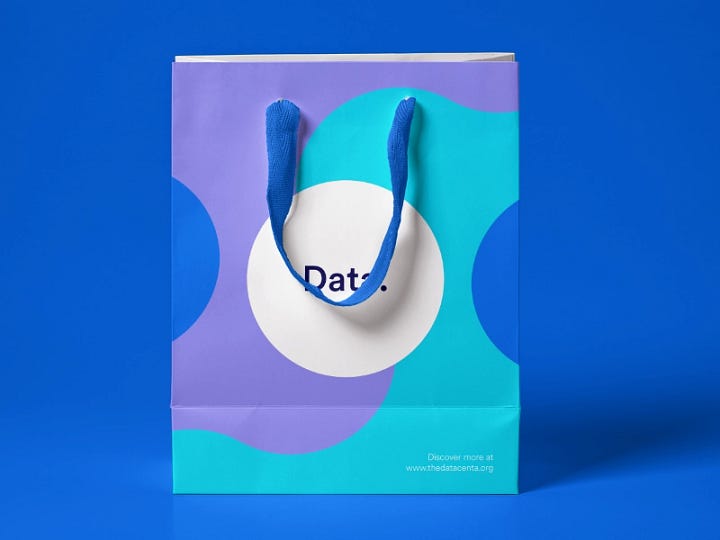
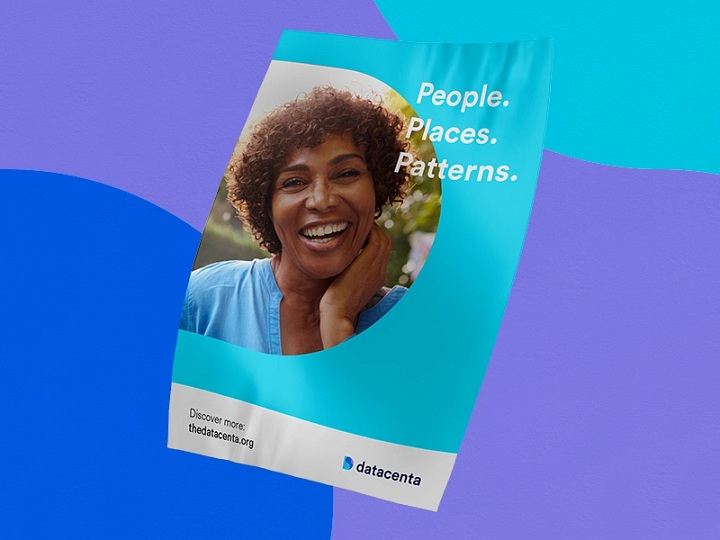
Fast forward to NYSC in 2014, I was posted to Rivers State. My mini portfolio got me a part-time graphic design job while I was teaching Mathematics in my PPA. So I had dual income as a corper at the time. #Ballerz.
I concluded my youth service and couldn’t get placement opportunities at the oil companies that I applied to despite offering to work for free. It was fascinating to me that a profession I stumbled upon (Graphic Design) happened to be more reliable than that in which I have a degree. I left Port Harcourt in September 2015. Barely weeks later, I resumed my first job as a graphic designer for a digital marketing agency in Lagos and I have not looked back since then.
How would you describe your experience and journey so far?
It was a solo one for a start. I would describe my journey as one filled with lots of curiosity, hustle, and self-learning. With time, I discovered a design community and soon realized there is more to design than just graphic design. I was a graphic designer for the first 2 years, after which I pivoted into UI and web design before learning there was also the UX side of things.
Having acquired professional certifications, I now enjoy using evaluative research methods to deliver functional mobile and web prototypes. It is difficult for friends and family to understand what exactly I do but that is changing as the tech and design industry continues to gain attention and relevance.
How would you describe what you do to a 5-year-old?
For context, I hope to use WhatsApp because it’s that digital product you can find in every household. Then I would say to a 5-year-old that it's my job to make sure their parent finds everything on WhatsApp easy to use.
What is your day-to-day routine? What does a typical day look like for you?
Major activities that fill up my day are actually chores, design work, and exercising. How I approach them depends on whether I am working full-time or freelancing.
Whenever I am freelancing, the time zone of the client I work with determines how my day starts. There are days I may start by hitting the gym first and return home to chores before starting any official work by the middle of the day.
As for my last full-time role as a product design lead, it was mostly meetings. Although, I was working from home as well. My Monday mornings are usually for general design standups where every squad within the design department share updates on their products. We typically use this medium to also share the tasks for the week and blockers.
Across the remaining days of the week, I am mostly meeting and collaborating with engineering leads and product managers. I am also responsible for organizing subsequent 1-on-1s with each designer. It is in these sessions that I gain in-depth knowledge about specific product challenges. Once I learn about these challenges, I am either resolving them or drawing up a budget and escalating to the stakeholders where necessary.
In general, it was less hands-on design because it was more of a managerial role.
What did you enjoy most about your job as a design lead at Softcom?
What I enjoyed most was hiring the right set of people. When I walk into an interview and see someone with potential, it gives me joy because I understand that the team is about to be better equipped with someone who is talented and knows their onions. This will also lead to a productive output for the design team in general.
What is the best career investment you have made as a creative?
That would be acquiring a MacBook because it is the most expensive of all the tools I use. I used to have this HP before getting the MacBook. The first time I used a MacBook, the whole experience was smooth. I could see the colours were better interpreted and it really improved my workflow.
The other investment would be paid professional courses.
Related interview
What were the challenges you faced as a design lead?
The aspect of my work that I consider the most challenging was recruiting the right research participants and conducting user interviews successfully.
User interviews are very insightful but getting the users to show up can be a struggle.
In my experience, it is a phase in product design that has required us to revisit our development timeline.
Despite different strategies, the success of this phase largely hinges on the availability of the users and the quality of the interview session itself. I have realized it’s a phase where we need to constantly innovate as designers and discover new ways to improve our communication skills.
Other challenges I faced were in times when my team members had “personal” problems. You will almost pray that the people you lead only have “work” problems because the moment they are going through something too personal, they hesitate to share and you end up with no clue on how to help navigate the situation.
How did you navigate these challenges?
For the user interviews phase, we would try different methods (virtual, inviting them over, or going out on the field) while we understand the pros and cons of these methods.
We typically valued user interviews more than surveys because interviews help you probe further. You often find opportunities to improve your product during a contextual inquiry. If we are unable to get as many interviews as planned, we have to work with what we had and make the best of it.
As for communication with my team members, I try to take certain conversations outside work and share personal challenges if I have to. This usually makes people feel more relaxed and comfortable sharing. I have also had to buy people lunch or send them money to make them feel better and productive.
Take us through your process and workflow at Softcom.
At Softcom, our problem-solving philosophy is to Understand, Solve and Deliver.
What this simply means for the design team is that the “Understand” phase is where we have initial gathering sessions to learn about the problem and discuss strategies for user research and competitor analysis.
We then “Solve” by synthesizing our data, and redefining the problem statement, personas, and user stories. We also draw up wireframes, and information architecture and validate early ideas at this stage.
We “Deliver” a fully functional and tested prototype by conducting a handover to the engineering team at the appropriate and agreed timeline.
However, on the management side, I should report to a VP of design but I reported directly to the CEO because we didn’t have one at the time. So I would go to the CEO with updates, challenges, and the needs of the team to get approval. I would also draft the budget that is needed by the team at the beginning of the year which usually includes the tools and resources that would be needed for the year. We also had senior management meetings where I gave updates to the senior management.
On workflow, members of the design team report to me on a weekly basis. For context, the highest number of people I had to manage at a time was 10; 7 Product designers and 3 Interface developers. I then report to a VP of design or directly to the CEO depending on who is available.
What are the essential gadgets, tools, and software you use for work daily?
For gadgets, a MacBook, iPad, iPhone, and Airpod.
Tools are Miro for user research, Notion for documentation, and Figma for design and prototyping.
How did the Covid-19 pandemic and lockdown impact you and your work?
The pandemic got me having mixed feelings honestly. My wife and I welcomed our first child during this period. I was also working at Softcom at the time. Since not much was going on globally, the stakeholders at Softcom agreed that we use the ample time to invest more in user research and product rediscovery. We believed that by revalidating our hypothesis, our suite of products can be improved. The lockdown gave us more than enough time to research, but then we were worried it wasn’t ending.
Our research methods were limited to virtual interviews. Subsequently, we were able to engage in more contextual inquiries as the lockdown was lifted. Generally, not much UI design was ongoing during COVID-19. I can’t forget this period because it’s the most I ever spent on a project and it led to good outcomes.
How do you handle creative blocks and setbacks during a project?
Well, my upbringing taught me a lot of resilience. I have come to understand that anything that has a beginning has an end.
Things hardly get to me but when the setback is really major, I discuss it with my peers and have conversations to talk through it. This helps me understand how others are navigating similar challenges.
When I have creative blocks, I simply try to change environment, go outdoors, or watch some documentaries to inspire creativity. I also see every day as an opportunity to do better, so if I can’t get something done on the spot, I return to fight another day.
My goal as a designer is to get exposed to the complete life cycle of a product from digital to industrial product. I believe there is a lot more exploration and learning to be done than becoming fixated on one problem. This simple philosophy of mine keeps me going
What is the task you don't enjoy doing but you have to do?
It has to be documentation and it is very important because it inspires team cohesion.
What are the most exciting projects you have worked on?
Useform, a survey and data collection tool, and Kwiksell, an all-in-one retail tool to sell and collect all kinds of payments. These were the products I worked on at Softcom during the lockdown.
A very big one is the Zenith bank website I worked on while at Cregital (2017).
It is interesting to know that they still use the website to date.
The next one would be designing the experience for AMVCA and Social Media Week for the years 2017 and 2018.
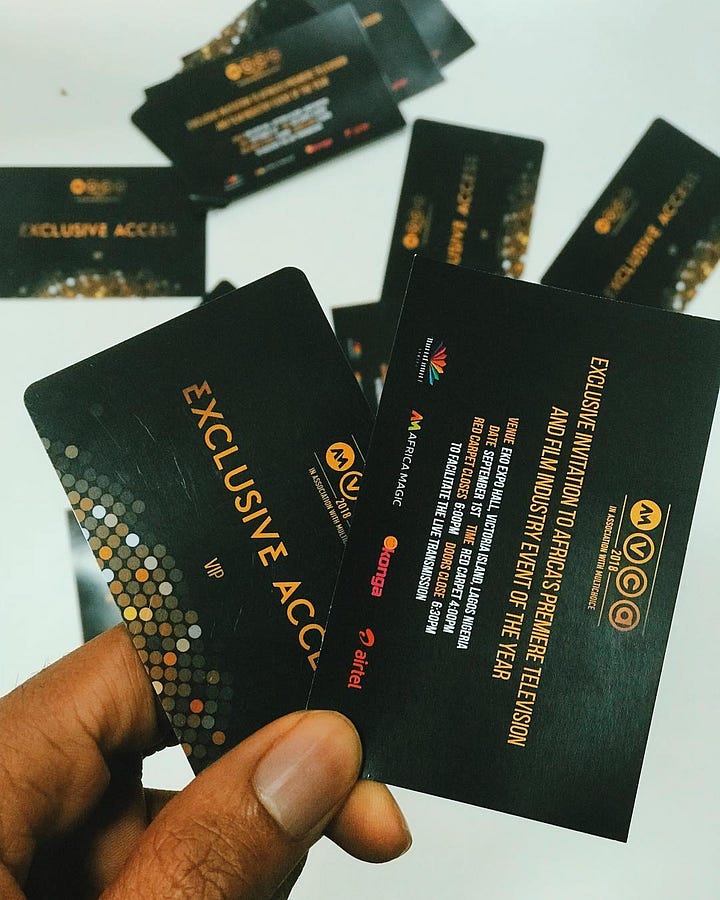
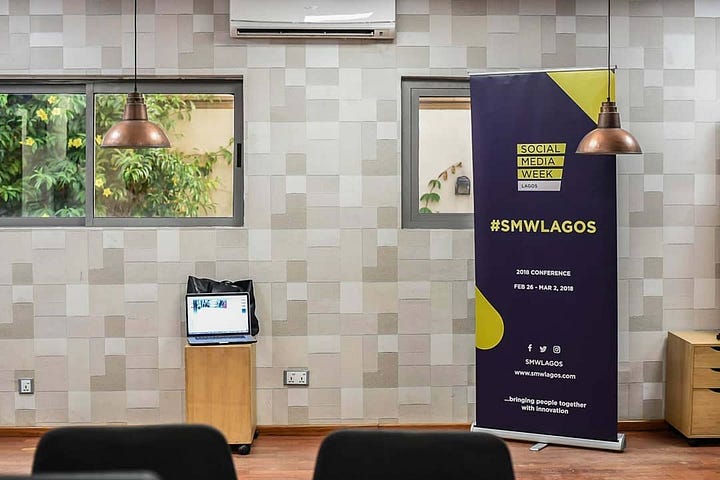
What keeps you motivated to keep creating? What drives you?
The thought and desire for a better life for myself and my immediate family. The need to have access to a better life keeps me going.
What do you do for fun? How do you relax when you are not working?
Asides from gaming and discovering unconventional movies, I often create timeless fashion expressions and I try to maintain a fit lifestyle. Trying out new outfits at home is interesting to me because it's kind of therapeutic for me.

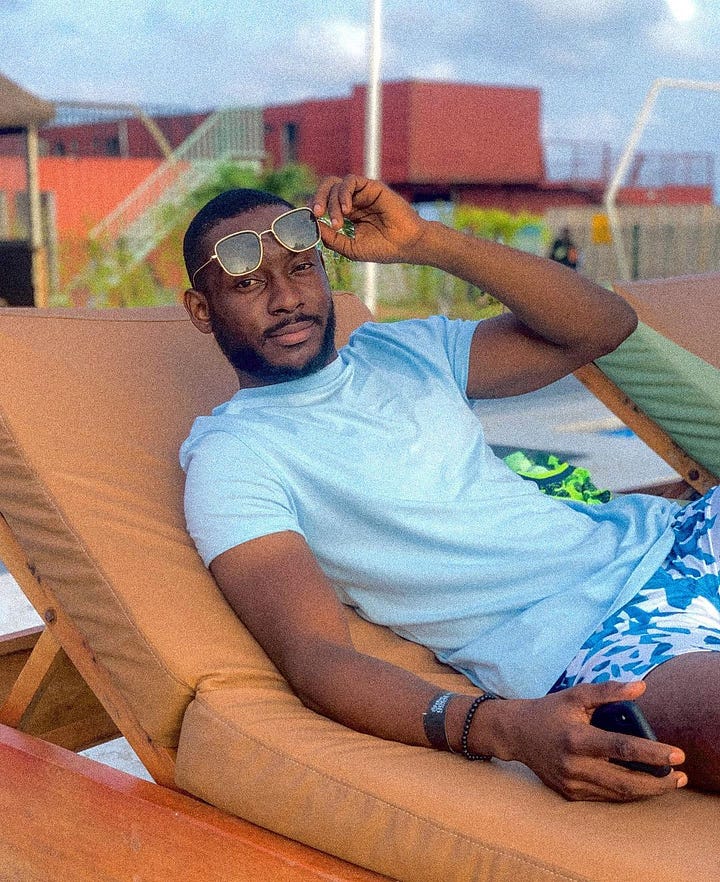
Who are the creatives that inspire you?
I love what Funfere Koroye is doing with hardware and industrial products.
I am humbled by Pablo Stanley’s ability to create open resources and Chris Do’s knowledge-sharing prowess.
I am also inspired by Vadim Carazan, Galshir, and Sajon Islam.
Who are the people you would love to work with or collaborate with?
Tunji Ogunoye and possibly the guys at Da Design Studio.
What brand(s) would you love to work with?
Google, Netflix, and Uber.
What would you be doing if you were not a designer?
Probably Engineering, Fashion, or Photography.
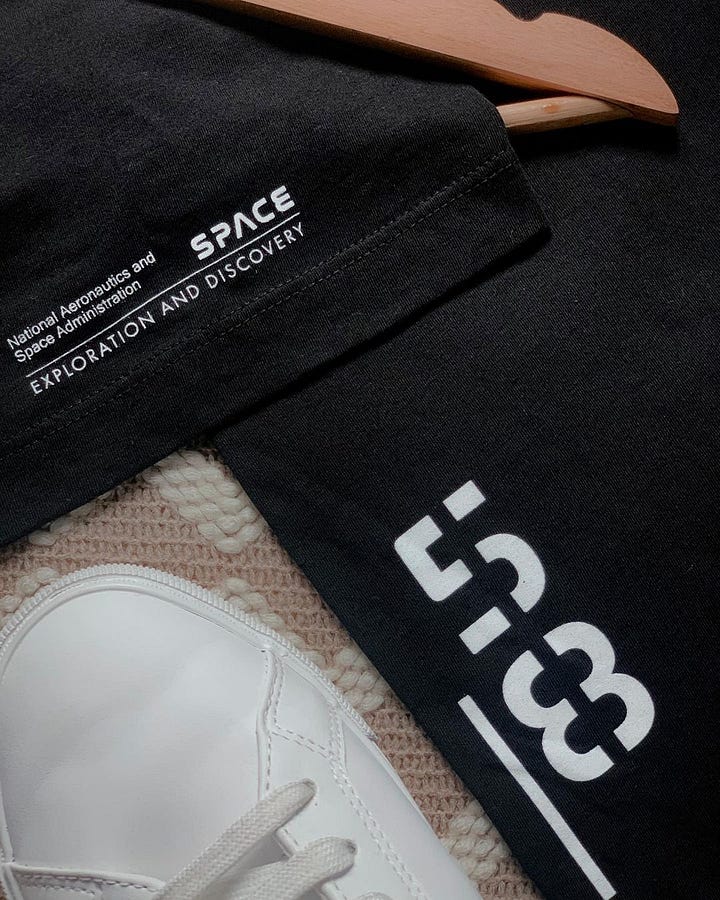
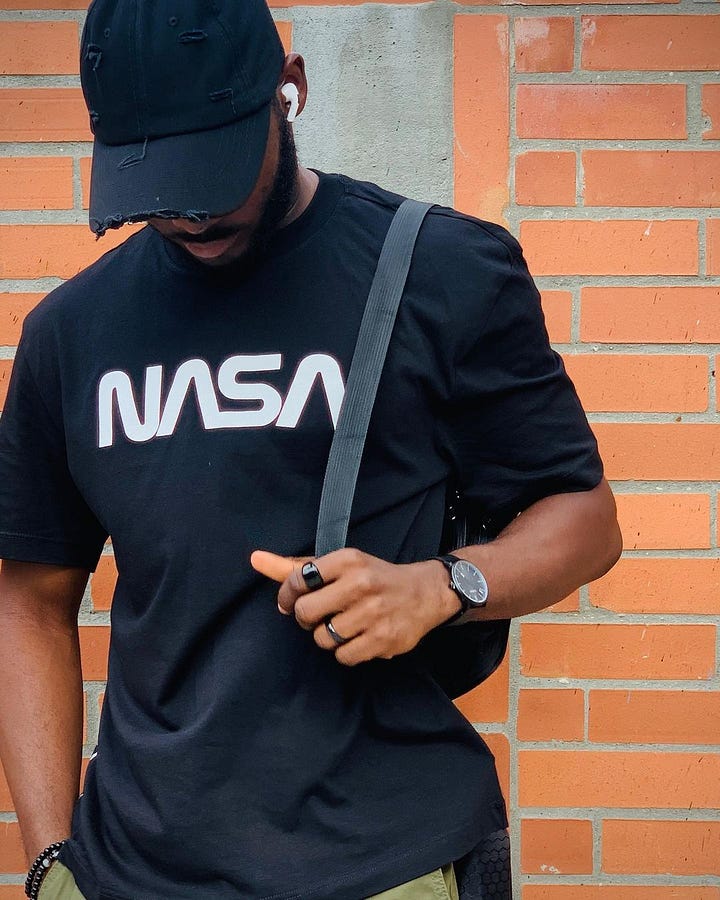
What advice do you have for someone who is just starting out or is at the early stage of their creative journey?
Stay motivated, it might seem like you are learning a bit of everything at the very beginning. This is absolutely normal as it will guide you to finding your area of specialization. So don’t stress, you will find your feet and niche over time.
Also, you should find a close community to associate and grow with. You should utilize platforms like ADPList and also strive to give back to the community when the time arises.
Read also
What would you consider success and fulfilment in your career when you look back in the next 20 years?
Playing a huge role in building a few products that have led to positive change in a particular society. Collaborating with thought leaders in diverse industries through tech.
Whose story would you love to read about?
Emmanuel Ikechukwu and Muhammad Abdull.
Do you have anything you would like to plug in or promote?
Follow me on Instagram.
Thank you for sharing with us!!!
Connect with Habeeb on Twitter and Instagram. You can also check out his portfolio.
Thank you for reading and don’t forget to like and share the interview.
I know you enjoyed this, you should consider subscribing.
See you next time!!!
Follow us on Twitter, Instagram, and LinkedIn to stay up to date.


